8 /10 1 Votes8
8.5/10 IGN Director(s) Hiroyuki Onoda Composer(s) Junko OzawaJesahm Genre Music video game | 76% Metacritic 76% GameFAQs Producer(s) Hiroshi Igarashi Initial release date 12 December 2003 Designer Shigeru Miyamoto | |||||||||||||||||||||||||||||||||
 | ||||||||||||||||||||||||||||||||||
Artist(s) Naruhisa KawanoToki Iida Awards BAFTA Games Award for Children's Game Similar Donkey Kong games, Shigeru Miyamoto games, Music video games | ||||||||||||||||||||||||||||||||||
Donkey kong bongos part 1 donkey konga
Donkey Konga (ドンキーコンガ, Donkī Konga) is a GameCube rhythm video game starring the ape Donkey Kong, developed by Namco and published by Nintendo. Instead of the standard GameCube controllers, the game is intended to be played with a special controller called the DK Bongos that resemble two small bongo drums.
Contents
- Donkey kong bongos part 1 donkey konga
- Cgrundertow donkey konga 2 review for nintendo gamecube video game review
- Story
- Donkey Konga 2 Hit Song Parade
- Donkey Konga 3 Tabe houdai Haru Mogitate 50 Kyoku
- Aftermath
- Donkey Konga
- Donkey Konga 2
- References
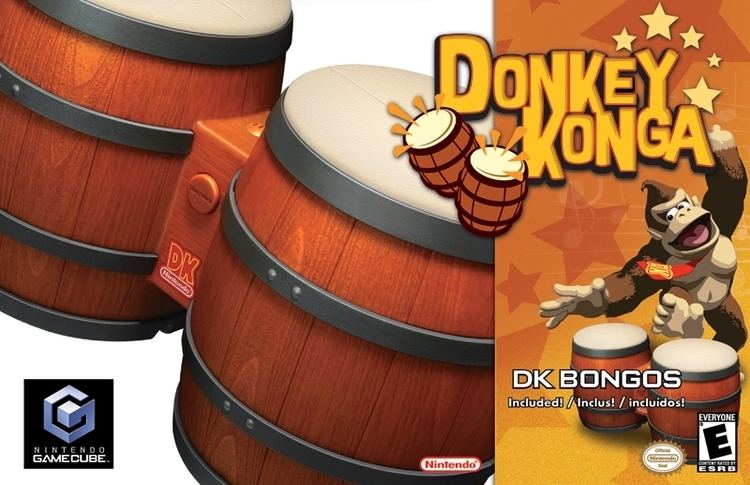
Donkey Konga was developed by the same team of people who made the Taiko: Drum Master series for the PlayStation 2. The tracks include hits such as "Louie Louie", "We Will Rock You", "Shining Star", "Rock Lobster" and "Losing My Religion". There are tracks from the Mario series, the The Legend of Zelda series and other Nintendo related music. All regional variants of the game have differing track listings, and in the North American version of both games, almost all of the licensed non-Nintendo/traditional songs are shortened covers.
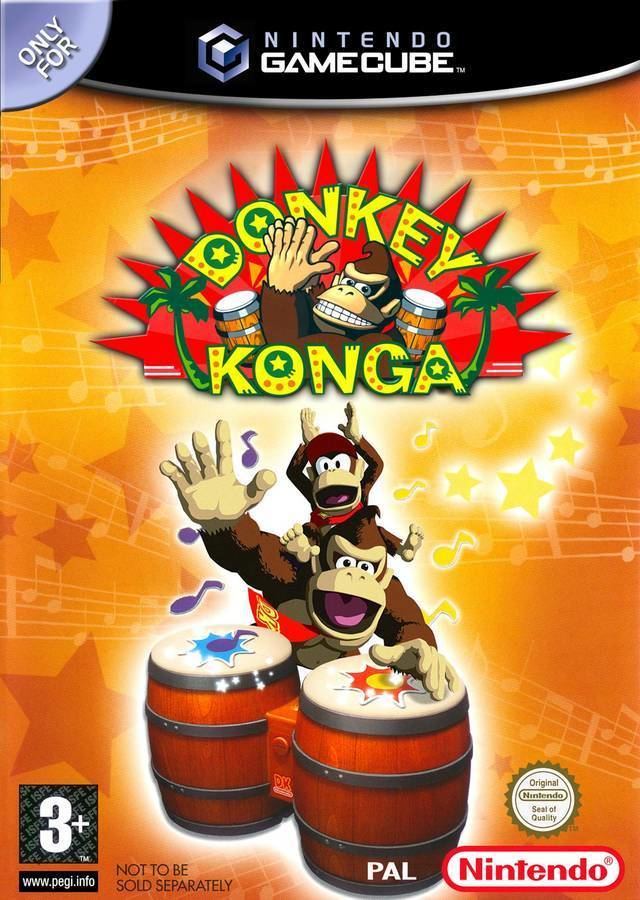
The Japanese, PAL, and US versions have different track lists. The different versions have around 30 tracks resp. around 55 in Donkey Konga 3.
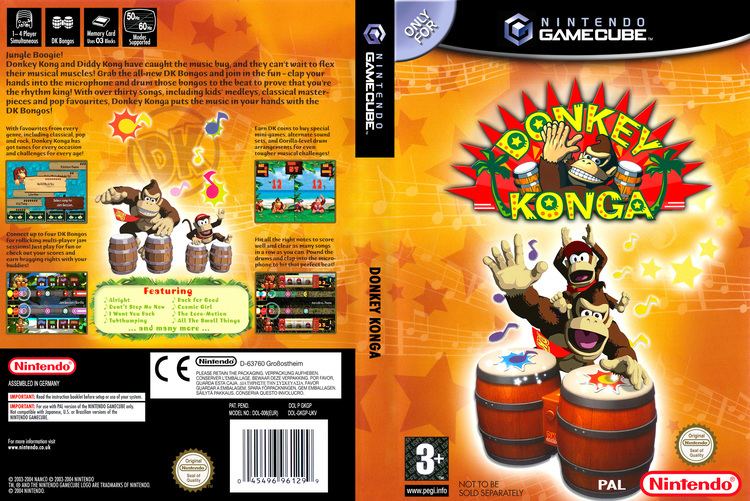
Cgrundertow donkey konga 2 review for nintendo gamecube video game review
Story
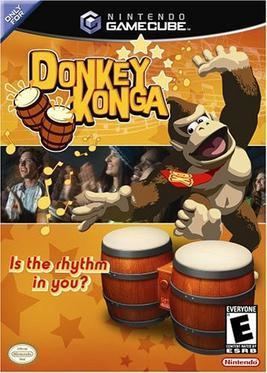
Donkey Kong and Diddy Kong are hanging out at the beach one day when they come across some mysterious objects that resemble barrels. Fearing they had something to do with King K. Rool, they take them to Cranky Kong. Cranky explains that they are bongos, so Donkey tries playing them. Diddy tries to do so as well. Then, when Donkey claps, the bongos start glowing. Cranky explains that the bongos have some kind of power inside them. Donkey and Diddy continue to play the bongos, but they both play terribly. Cranky advises them to practice. At first they are against this, but then they realize if they can become successful in playing the bongos, they could afford as many bananas as they wish, so they start practicing.
Donkey Konga 2: Hit Song Parade!
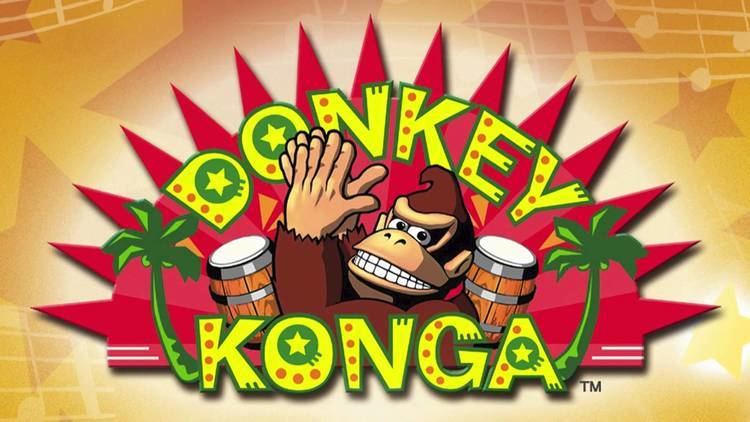
Donkey Konga 2 (ドンキーコンガ2, Donkī Konga Tsū)—Marketed in Japan as "Donkey Konga 2: Hit Song Parade!" is the 2004 sequel to Donkey Konga for the Nintendo GameCube, a video game where the player must pound on a special, barrel-like controller called the DK Bongos along with a selected song.
The main selling point of Donkey Konga 2 is over 30 new tracks to play with Bongos. Other features include slightly improved graphics, the inclusion of some classic Donkey Kong characters and a variety of new minigames.
This is the only Donkey Kong game to be rated T for teen, as it contained Lyrics not suitable for younger players.
Donkey Konga 3: Tabe-houdai! Haru Mogitate 50 Kyoku
Donkey Konga 3 (ドンキーコンガ3 食べ放題!春もぎたて50曲♪, Donkī Konga Surī: Tabe-houdai! Haru Mogitate 50 Kyoku, Donkey Konga 3: All You Can Eat! Spring 50 Music Works Mix) is a music video game in the Donkey Kong series developed by Namco and published by Nintendo. Before the second installment was released in North America, Nintendo and Namco had already started plans for the third game in the series, which, unlike the first two Donkey Konga games, was eventually released only in Japan in early 2005.
Donkey Konga 3 features a total of 57 track (includes the all new track), over 20 track more than the first two games. 35 of these tunes are the usual classical, pop, and game selections, but an extra 21 tunes from Famicom games are included. It also features all new minigames.
Aftermath
Namco would continue to produce Taiko no Tatsujin games for the Nintendo Wii. A few songs were used in this series that were also used in Donkey Konga as well. The Taiko no Tatsujin games were only released in Japan with the exception of the North America release of Taiko: Drum Master for the PlayStation 2 and mobile phones.
Donkey Konga
Donkey Konga received "generally favorable reviews" according to the review aggregation website Metacritic.
Maxim gave the game a score of eight out of ten and said that four bongos should be added "to create a frenzied, unholy din suitable for ritual virgin sacrifice." The Sydney Morning Herald gave it four stars out of five and stated: "The beginner's level is a breeze, but Konga later becomes deliciously challenging, with hilarity-inducing flustered panic as you start to fall behind and surprising levels of concentration required to clap instead of drum. Hysteria soon prevails." The New York Times, however, gave it a mixed review and said, "Before you buy Konga, try clapping along with every song on the radio for half an hour and see how you feel at the end."
Donkey Konga won an award at the Game Developer's Conference for the best "Innovation" in 2005.
Donkey Konga 2
Donkey Konga 2 received "average" reviews according to Metacritic.
